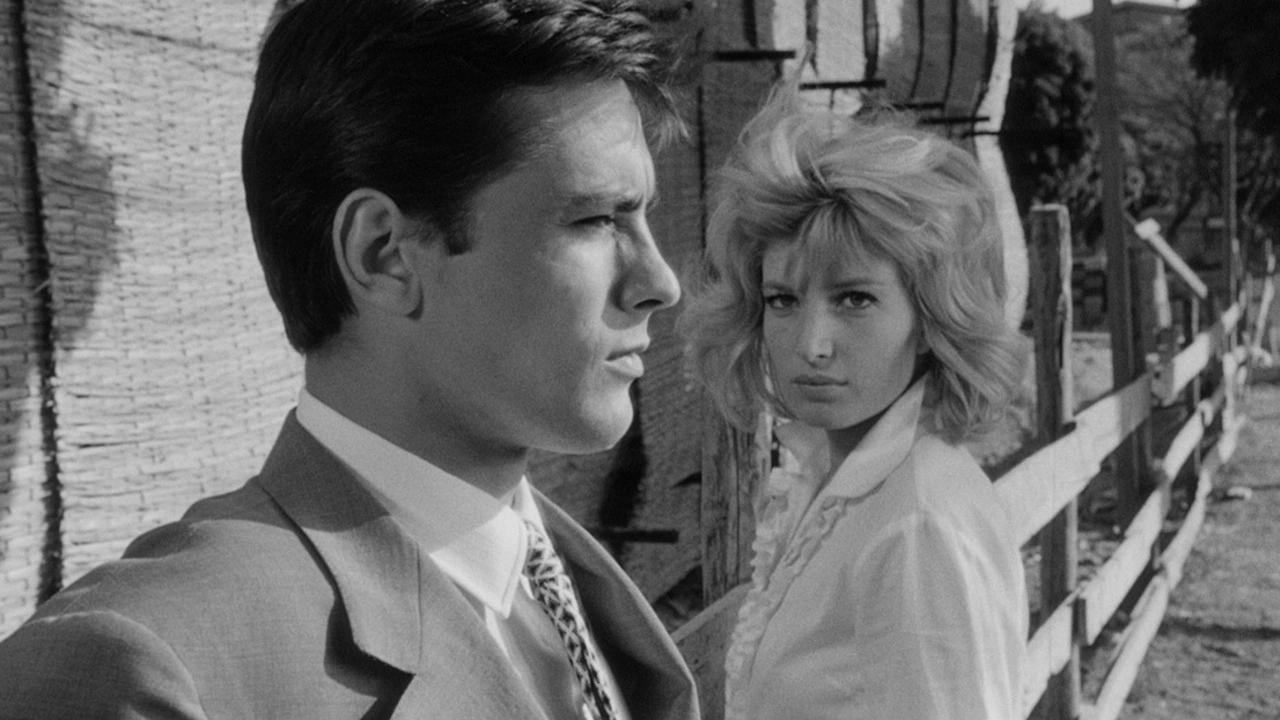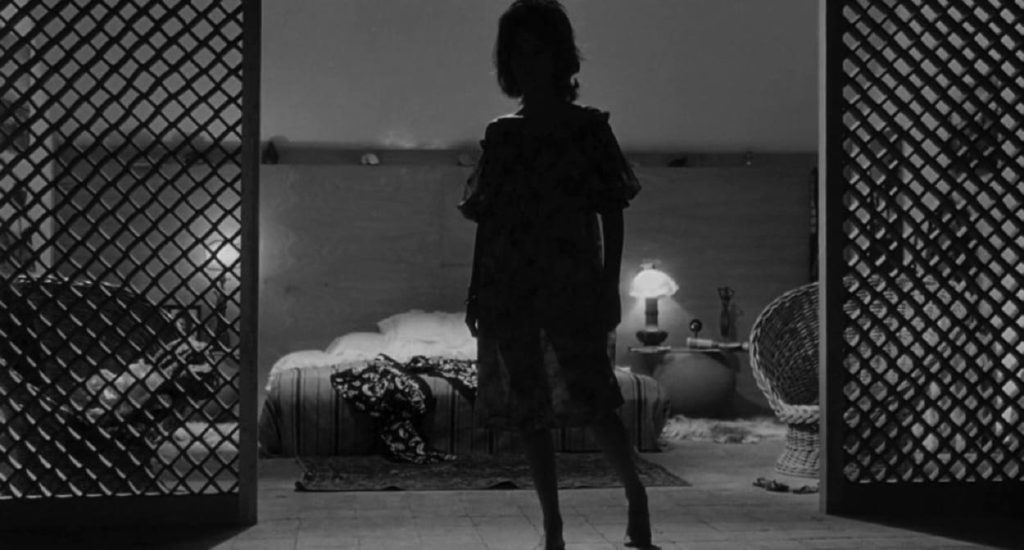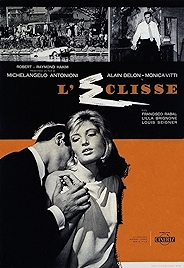Existential girl Monica Vitti meets material boy Alain Delon in L’Eclisse (The Eclipse), the last of Michelangelo Antonioni’s “Incommunicability” trilogy and by a stretch the easiest to watch.
Whether this, L’Avventura and La Notte actually are thematically a trilogy at all is an argument best left for another day, but Antonioni didn’t see them that way – it was critics who lumped them together. What does definitely link all three is Monica Vitti – as a peripheral character who becomes much more important in L’Avventura, as chunky co-lead in La Notte but absolutely the main event here, from first shot to last.
Antonioni starts the film with a brilliant scene set in a living room where Vittoria (Vitti) and Riccardo (Francisco Rabal) are splitting up at dawn, having obviously spent all night hashing out what to do about their relationship. No words, just the room, a curtain which an impassive Vittoria creaks back to reveal the day coming up, Riccardo sitting exhausted in the air stream of an electric fan. “Allora, Riccardo,” (“Well, Riccardo”) she finally says and that, after some niceties to indicate it wasn’t easy-come easy-go on either side, is that.
Cool Vittoria drifts out onto the cool empty streets and into the rest of her life. Where does a girl go who’s wounded after a relationship break-up? To her modernist, bare brick apartment first of all, and then on to the tender embrace of her mother, who, as rarely happens in films, especially Italian films, is to be found at the Rome stock exchange fanatically dabbling in stocks and shares, a gifted amateur who makes a bit here, loses a bit there.
As in La Notte, Antonioni juxtaposes a real world problem (Vittoria’s break-up) with a first world problem (share dealing), stylistically contrasting the drifting, affectless, sphinx-like Vittoria with the frenzy of the trading floor. He also switches out the shooting style he reserves for Vittoria – exquisite compositions still to the point of stasis – with its antithesis at the stock exchange, where his camera bobs, weaves and glides about the room, and hundreds of people (real stock market traders, in fact) are choreographed to within an inch of their lives. A high point if you’re a lover of the sort of fluid camerawork Martin Scorsese would later repurpose in films like Goodfellas.
Here, almost by accident, through her mother, Vittoria meets Piero (Delon), a cocky and highly competent trader who shows not the least interest in Vittoria, or her in him, and yet Antonioni amusingly suggests they will get together in a series of ironic compositions where the two of them are in the same frame but divided by something – a stone pillar, a fence, a lamp post.
That’s it, the entire film. She leaves one man and finds another, but what a sublimely drawn-out affair it is, Antonioni teasing the entire way, and incidentally more or less creating the “empty” visual language of so much 1960s cinema.
For the last half hour or so there’s barely a word spoken as Vittoria and Piero drift through deserted sun-baked streets, Antonioni finally giving way to what seems to have been an impulse all the way through and delivering one snapshot after another – an oil drum filling with water, ants swarming over a tree, two nuns crossing a barren square, a bus departing. It’s dreamlike, and with Giovanni Fusco’s almost atonal, modernist score parping away, it almost feels like a sci-fi movie.
If existential mithering isn’t your thing – and you could argue that Antonioni is poking fun at Vitti’s character rather than celebrating it – watch it for its sheer visual beauty, a “classic” composition followed by another with its feet or head cut off, everything exquisitely caught by DP Gianni di Venanzo.
L’Eclisse – Watch it/buy it at Amazon
I am an Amazon affiliate
© Steve Morrissey 2022


